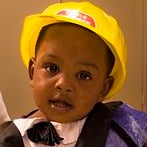
5 ways to help build speech and language skills at home
Try these 5 simple ways to help strengthen your child’s speech and language skills as they grow from baby to toddler.
By: Serena V. Osher MSP CCC-SLP
Research shows that parents play a tremendous role in their child’s speech and language development from day one. Speech and language skills provide the framework for conveying and receiving information to and from others. These skills begin to develop the moment babies enter the world. Luckily, it is very easy to provide support to your little ones using your natural ability to communicate. Here are 5 easy ways to help build speech and language skills at home.
1. Narrate your day.
Talk to your baby and toddler throughout the day about what you are doing.
Example:
- ”It’s time to get up”
- “Let’s get you changed”
- “You’re all done”
- “Let’s go get your brother from school”
Try to use the same phrases over and over again as repetition is key.
2. Label specific items that you use during your day and hold those items to your face when labeling.
Example: During dressing
-
“These are your socks”
-
“This is your diaper”
- “These are you shoes”
When they get a little older ask them to grab their socks or their diaper to check if they understand the words.
3. Encourage turn-taking and imitation skills. Children learn a lot by watching their parent’s actions, words and facial expressions. Play simple games with them.
Example
-
Take turns playing peek-a-boo while hiding behind a blanket or covering your eyes with your hands. Make surprising funny faces and encourage imitation.
-
Play copycat. If they start making noises encourage them to keep going by imitating their noises. If they slap the table then you should also slap the table. If you wave at them encourage them to wave back. Don’t be afraid to help them complete new actions using hand over hand assistance.
4. Sing songs and make silly noises. Nothing gets your child’s attention like music and fun noises. All you need is a few simple songs under your belt. Engage them by using good facial expressions and body motions to go along with your songs.
Example
-
Move your arms like you are rowing a boat while singing “Row, row, your boat”
5. As your baby grows into a toddler they have more options to choose from in life so be sure to always offer a choice of 2 items. Being able to choice make demonstrates communicative intent and allows children to see that their communication can get them what they really want. Just label each item while holding it or pointing to it, thus providing a verbal model for the vocabulary.
Example:
-
“Would you like to play with your ball or your rattle?”
-
“Would you like milk or juice?”
You should accept looking at, pointing to, grabbing for, and vocalizations as forms of communication and then help them out by modeling the words.
Example:
-
“You are reaching for the ball.” “You want the ball.”
One other tip
Stay on top of ear infections. If your child has frequent ear infections you need to discuss treatment options with your pediatrician. Ear infections often cause temporary hearing loss and are a common cause for language delays.

